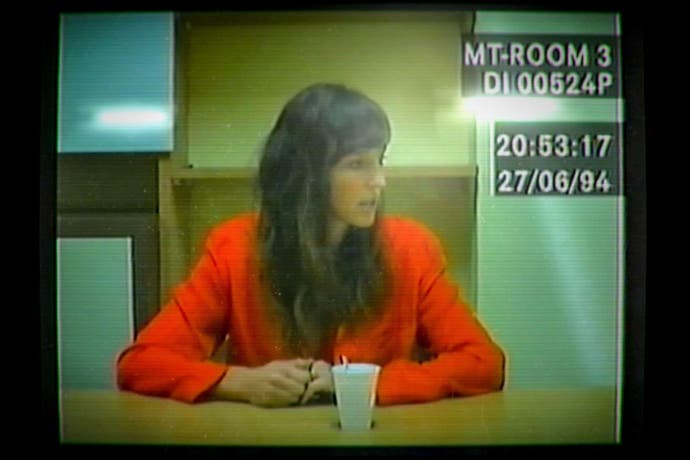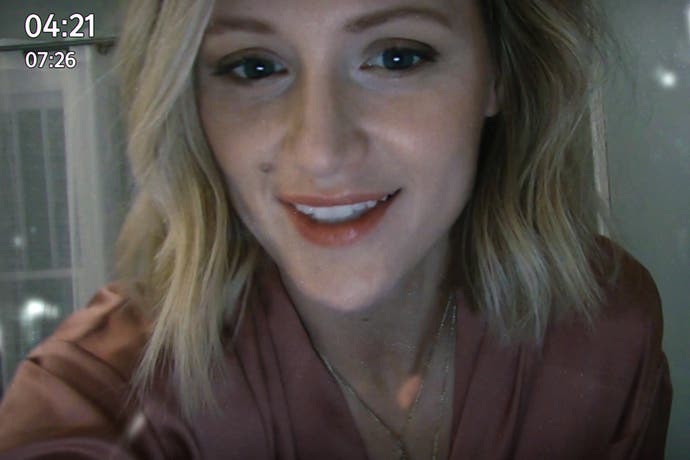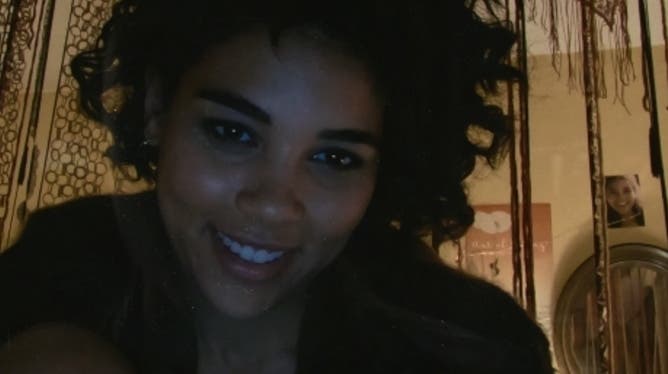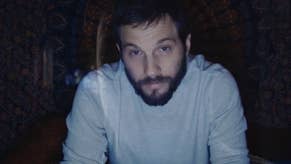Secrets and lies: unearthing the ambitious follow-up to Her Story
Where Roeg, Ballard and Breath of the Wild meet.
Talking to Sam Barlow is kind of like playing through his most celebrated game. Pop in a keyword and it'll send him on a spiral of thought, looping through different topics and themes before landing back somewhere familiar. It's as if his thought patterns have been rewired by the games he's been working on, evolved into some kind of non-linear sprawl that his conversation invites you to tug away at until you find a thread that might take you somewhere new. Even his accent flits around in some hard to pin down nether region between Yorkshire where he was born, Tanzania where he spent some of the childhood or New York where he calls home now.
It's been some four years since Her Story, the fascinating interactive movie and meditation on narrative devices that earned numerous plaudits that helped make Barlow - already well-known for his work on Climax's Silent Hill games as well as its unreleased Legacy of Kain title - much in demand. He's hardly been absent in the time since - there was the episodic reimagining of WarGames last year - but he's now revealing the follow-up to Her Story. Called Telling Lies and due out later this year via a partnership with Annapurna Interactive, Barlow is allowing small glimpses of it on a laptop in a boxy, makeshift room in the Moscone Center during this year's GDC.
"The most sensible thing, for my accountant, would have been for me to do a follow-up to Her Story, with a different person in a room being interrogated. And some people were like, we'd love that."

Barlow, though, had something a little different in mind, and wanted to double down on the sense of intimacy that players felt was there in Her Story. "I thought a lot about what this it was doing with video storytelling - I wouldn't describe it as an interactive movie. It's kind of anti-cinematic, so that's a texture that I like."
There were other textures, too - the video installations of Steve McQueen and Sam Taylor Wood, and more specifically one from the latter artist that found its way into the National Portrait Gallery, presenting 107 minutes of David Beckham sleeping in a Madrid hotel room. "It's the coolest thing - nothing is happening which makes you watch it more intently," says Barlow. "It's this very private thing you're intruding on. That was a very interesting texture to me. It's not anything you'd ever put in a movie, it doesn't make sense in that kind of heavily edited piece of visual storytelling."
That sense of intrusion - suggested in Her Story - is amplified in Telling Lies. "When touring with Her Story I spent a lot of time Facetiming my wife and kids, and I read a lot of stuff reading about what those ways of communicating have done to our lives, the way it's transformed people's sex lives, how courtship works - and I thought this is a format that'd be fun to explore, and double down on that.
"Her Story had this interestingly gothic backstory - Telling Lies continues to push further away from the kinds of stories we'd normally deal with [in video games]. My shitty high concept is that it's like Sex, Lies and Videotape meets The Conversation - it's a story of four people, their relationships and how they messily intertwine in the context of larger political questions. I loved The Conversation - as much as it was a movie that came out of the Watergate era, it tells its story through this intensely personal character study. I love that era of filmmaking, I love their ability to tackle things like that in a way that's super interesting and we don't necessarily get to do that in video games."
In Telling Lies, you're working through a database procured from an NSA hard-drive, scratching away first at the initial enigma - why exactly are these four people's conversations of interest to the NSA? - and then delving deeper still. With its riffing on themes of surveillance and technology, it promises to be that most refreshing of things - an openly political video game. How, exactly, have recent global developments informed Telling Lies throughout its development?
"We've been working on this for a few years now, and as those years have gone on it's got more and more relevant in a way that's slightly scary," says Barlow. "Knowing that these are things that are important to me, knowing that they're important in the world - I hope I'm usefully contributing to this discussion, and also speaking from a position of knowledge. [Telling Lies] is very much about the intersection of private lives, intimacy and government, and the intrusion on all of the concepts we hold dear about our right to a private life, and the extent to which in a digital age those rights are increasingly encroached upon. Every night, I go to bed and take this device with a mic and camera in it and put it by my bed, and I don't think twice about that."
The footage you scour through in Telling Lies is all captured from personal devices - laptops or phones - presenting these conversations to you. It lends it all an elliptical air, the story taking place over two years while you're only picking up on the moments when these four people are talking to each other online. It also means that key story beats will happen away from your prying eye, your understanding of them coming only in their afterglow - an almost novelistic conceit that has you reconstructing some of the biggest moments in your mind. It's counter-intuitive in the world of video games, and all the more thrilling for it.

"The cool thing with video games is that everything can be on screen - in GTA you get in a cab and drive from one part of the city to another - in a movie that'd be cut. It's a basic system of a conventional video game that you see 360 degrees, see every detail and soak it all up. There's something when you're interacting, and immersed in something, doubling down and using your imagination is even more powerful."
The interface in Telling Lies is more contemporary, and is itself a commentary of sorts on the sensory overload that's part of the modern experience. "A lot of it comes from how densely inundated we are with information now," says Barlow. "It's the multi-threaded multi-tab hyper-textual world where we're following links, reading stuff, seeing things trending on Twitter, going to a different tab. Everything's so densely connected and layered - it's cool to leverage that and use that to tell a story."
It all means a different, denser way of dealing with the information given to you (as well as having more to hand - there's some four to five times more footage in Telling Lies than there was in Her Story). "By searching for a certain word you might get this cross-section of two or three scenes which give you that huge ebb and flow of these relationships, and they're mashed up against each other," says Barlow. "Whereas Her Story was lots of very small clips, what you have here is way longer clips - entire conversations that have been captured by this thing, and it drops you in right where the word has been spoken, so not only are we jumping you around but we're dropping you right into the middle of a conversation. So you're getting this sense of walking into something that's already happening, listening in on something that's not for your benefit, and you have that extra step of inferring what's going on."
Messy? Perhaps, but gloriously, pointedly so. "The beautiful thing about this," says Barlow, "in exploring personal relationships - if I ask someone to think about a failed relationship in their past, they don't have this neat linear curated story. They might remember the first time they met, how special that felt, then the blazing row they had when they broke up. It's remembering all these bits and pieces that are intensely emotional memories, but there's still the overriding sense of how it now sits with them. As a texture, that's fascinating to me."
We're onto texture again - the keyword that would perhaps throw up most results when looking back at a conversation with Barlow - and it underlines his own personal approach to storytelling. In Telling Lies, the texture is multi-faceted. It's there in the very tactile nature of scrubbing backwards and forwards through clips, with Barlow inspired by the Steenbeck editing suites used in the film industry that once gave a very physical form to the form.
"I was watching Nicolas Roeg," says Barlow, "and he was talking about when he first got into the film industry and he went into an editing suite and saw the massive machines they use. The first time he saw someone play a film backwards, he thought it was magical. There's this point in his film Walkabout where the young boy sees a buffalo and it's killed, it's horrible and his heart is broken, and on seeing it die he plays the footage backward and you see it in reverse and it comes back to life, as his way of expressing this boy's desire to undo the death of this thing."
Roeg's wonder at film as a physical thing is one influence on Barlow and Her Story, but so too is his use of non-linear editing. It's story-telling as sculpture, with no defined entry or exit point. "If that stuff is sufficiently interesting," says Barlow, "if it's sufficiently layered, it'll always be interesting to uncover." That's how J.G Ballard's The Atrocity Exhibition - a famously, thrillingly disjointed collection of stories and sketches - came to be a touching point for Barlow during the making of Her Story, and it feels like it's providing a guiding light in Telling Lies too.
Ballard and Roeg as references? How refreshing it is to have a video game that looks beyond the sci fi of Aliens or the fantasy of The Lord of the Rings as its influences, though if you're concerned that Telling Lies is forgetting the medium in which it's telling its own story, then worry not. It is still unashamedly, defiantly and proudly a video game.
"Something I keep referencing on this one, which is a fun comparison as it's possibly the greatest game of all time, is Breath of the Wild," says Barlow. "When I played that, I felt this huge commonality. There's something about how generous that game is, how quickly Nintendo get out the way and let your curiosity lead you - and there's a confidence that comes out of Nintendo and that game where it's always rewarding. You see something that's interesting and you walk over there, and it's always rewarding to get there. The journey itself is interesting. Being given this freedom, but it being this useful freedom. There was something emotionally about how it felt to play that game, and that's what I'm trying to do here."







.png?width=291&height=164&fit=crop&quality=80&format=jpg&auto=webp)




.jpg?width=291&height=164&fit=crop&quality=80&format=jpg&auto=webp)
